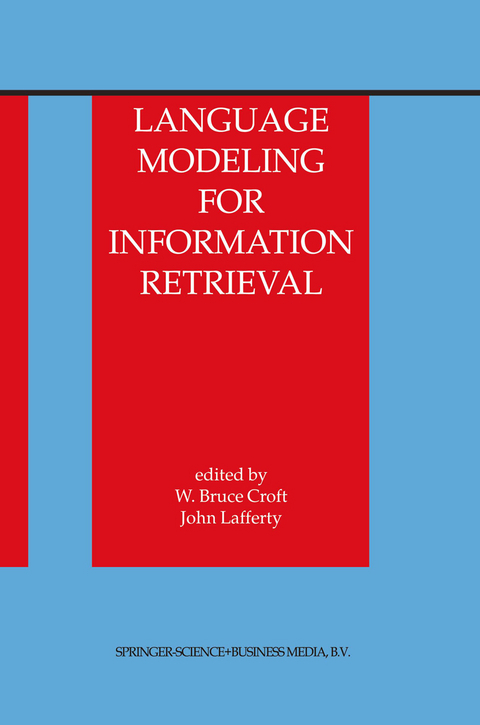
Language Modeling for Information Retrieval
Seiten
2010
|
Softcover reprint of hardcover 1st ed. 2003
Springer (Verlag)
978-90-481-6263-5 (ISBN)
Springer (Verlag)
978-90-481-6263-5 (ISBN)
A statisticallanguage model, or more simply a language model, is a prob abilistic mechanism for generating text. Such adefinition is general enough to include an endless variety of schemes. However, a distinction should be made between generative models, which can in principle be used to synthesize artificial text, and discriminative techniques to classify text into predefined cat egories. The first statisticallanguage modeler was Claude Shannon. In exploring the application of his newly founded theory of information to human language, Shannon considered language as a statistical source, and measured how weH simple n-gram models predicted or, equivalently, compressed natural text. To do this, he estimated the entropy of English through experiments with human subjects, and also estimated the cross-entropy of the n-gram models on natural 1 text. The ability of language models to be quantitatively evaluated in tbis way is one of their important virtues. Of course, estimating the true entropy of language is an elusive goal, aiming at many moving targets, since language is so varied and evolves so quickly. Yet fifty years after Shannon's study, language models remain, by all measures, far from the Shannon entropy liInit in terms of their predictive power. However, tbis has not kept them from being useful for a variety of text processing tasks, and moreover can be viewed as encouragement that there is still great room for improvement in statisticallanguage modeling.
1 Probabilistic Relevance Models Based on Document and Query Generation.- 2 Relevance Models in Information Retrieval.- 3 Language Modeling and Relevance.- 4 Contributions of Language Modeling to the Theory and Practice of IR.- 5 Language Models for Topic Tracking.- 6 A Probabilistic Approach to Term Translation for Cross-Lingual Retrieval.- 7 Using Compression-Based Language Models for Text Categorization.- 8 Applications of Score Distributions in Information Retrieval.- 9 An Unbiased Generative Model for Setting Dissemination Thresholds.- 10 Language Modeling Experiments in Non-Extractive Summarization.
| Erscheint lt. Verlag | 6.12.2010 |
|---|---|
| Reihe/Serie | The Information Retrieval Series ; 13 |
| Zusatzinfo | XIV, 246 p. |
| Verlagsort | Dordrecht |
| Sprache | englisch |
| Maße | 155 x 235 mm |
| Themenwelt | Informatik ► Datenbanken ► Data Warehouse / Data Mining |
| Informatik ► Theorie / Studium ► Algorithmen | |
| Informatik ► Theorie / Studium ► Künstliche Intelligenz / Robotik | |
| ISBN-10 | 90-481-6263-7 / 9048162637 |
| ISBN-13 | 978-90-481-6263-5 / 9789048162635 |
| Zustand | Neuware |
| Haben Sie eine Frage zum Produkt? |
Mehr entdecken
aus dem Bereich
aus dem Bereich
Datenanalyse für Künstliche Intelligenz
Buch | Softcover (2024)
De Gruyter Oldenbourg (Verlag)
CHF 104,90
Auswertung von Daten mit pandas, NumPy und IPython
Buch | Softcover (2023)
O'Reilly (Verlag)
CHF 62,85


